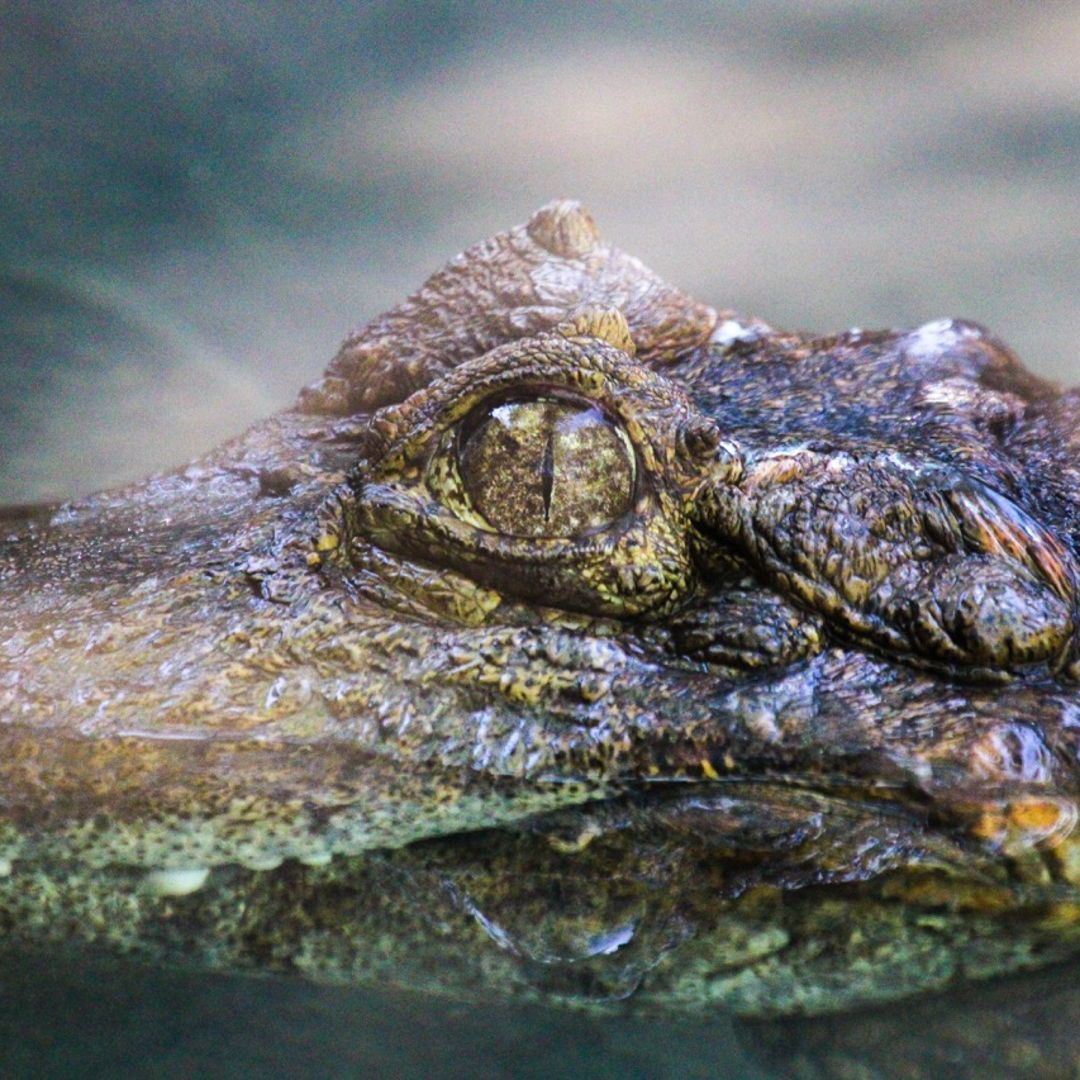Summary:
1. Caimans have a distinctive triangular shape above their upper eyelids.
2. This feature can be found in several caiman species.
3. Other caiman species include the largest and smallest of the crocodilian family.
4. Caimans have unique adaptations that make them fascinating creatures.
5. Learning about their behavior and habitats can help us appreciate and conserve them.
When you think of reptiles, what comes to mind? Snakes, turtles, or perhaps crocodiles? While crocodiles often steal the spotlight, another fascinating group of reptiles deserves our attention: caimans. These small to medium-sized crocodilians have unique features that set them apart from their more famous relatives.
One particularly intriguing characteristic of caimans is a distinctive triangular shape above their upper eyelid. Imagine their eyes adorned with a majestic crown, giving them an air of regality. This feature can be observed in a few caiman species, including the Common caiman, the Spectacle caiman, the Broad-snouted caiman, and the Yacare caiman. It’s like they’re wearing nature’s sunglasses!
But let’s not forget about the other members of the Caiman family. Alongside those sporting the “eyelid crown,” two notable caiman species deserve mention: the Black caiman and the Dwarf caiman. The Black caiman holds the prestigious title of being the largest caiman species. Growing up to an astonishing length of 5 meters, this formidable creature reigns over its habitat, commanding respect from anyone who encounters it.
On the other end of the spectrum, we have the Dwarf caiman, which claims the title of the smallest crocodilian within the 24 known species. This tiny reptile may be small at a mere 1.2 meters, but it possesses the same captivating allure as its larger counterparts. Additionally, we have its relative, the Smooth-fronted caiman, shares the same enchanting characteristics.
Caimans are not just visually intriguing but also have various fascinating adaptations. One of these adaptations is their ability to remain motionless for extended periods, patiently waiting for unsuspecting prey to wander within striking distance. This stillness, paired with their unique triangular eye shape, gives them an uncanny appearance that simultaneously fascinates and frightens them.
These reptiles are also impressive swimmers, equipped with webbed feet that aid their aquatic lifestyle. Those who have observed a caiman gracefully gliding through the water can attest to their elegance and efficiency. It’s as if they were born to be underwater acrobats, effortlessly twisting and twirling beneath the surface.
To appreciate caimans fully, it’s essential to understand their behavior and natural habitats. Caimans are primarily found in freshwater environments such as rivers, lakes, and swamps across Central and South America. They have a vital role in their ecosystems, acting as keystone species and helping to regulate populations of fish and other aquatic creatures.
It’s fascinating to learn that caimans are social animals, often living in groups known as pods or congregations. These groups provide protection, companionship, and opportunities for cooperative hunting. Within these communities, caimans communicate through vocalizations and body postures, exhibiting complex social dynamics.
While caimans have existed for millions of years, their survival is not guaranteed. Habitat destruction, pollution, and overhunting pose significant threats to their populations. As nature enthusiasts, we are responsible for ensuring these captivating creatures’ conservation. We can make a difference in their survival by actively supporting conservation efforts and spreading awareness about the importance of preserving natural habitats.
In conclusion, caimans are remarkable creatures that captivate us with their distinctive features, intriguing behaviors, and magnificent adaptability. Whether it’s their majestic triangular eye shape or impressive swimming abilities, there is always something new and exciting to discover about these reptiles. So, let’s embark on a journey of exploration and conservation, celebrating the wonder and uniqueness of caimans and their role in our natural world. Remember, it is through understanding and appreciation that we can inspire change and protect these fascinating creatures for generations to come.
*****
Source Description
Caimans like this one can have this distinctive triangular shape above their upper eyelid. This feature can be found on Common caiman (aka Spectacle caiman), Broad-snouted caiman, and Yacare caiman.
Other caiman types include the largest caiman, Black caiman, and the smallest crocodilian of all 24 species, the Dwarf caiman, plus its relative, the Smooth-fronted caiman.

